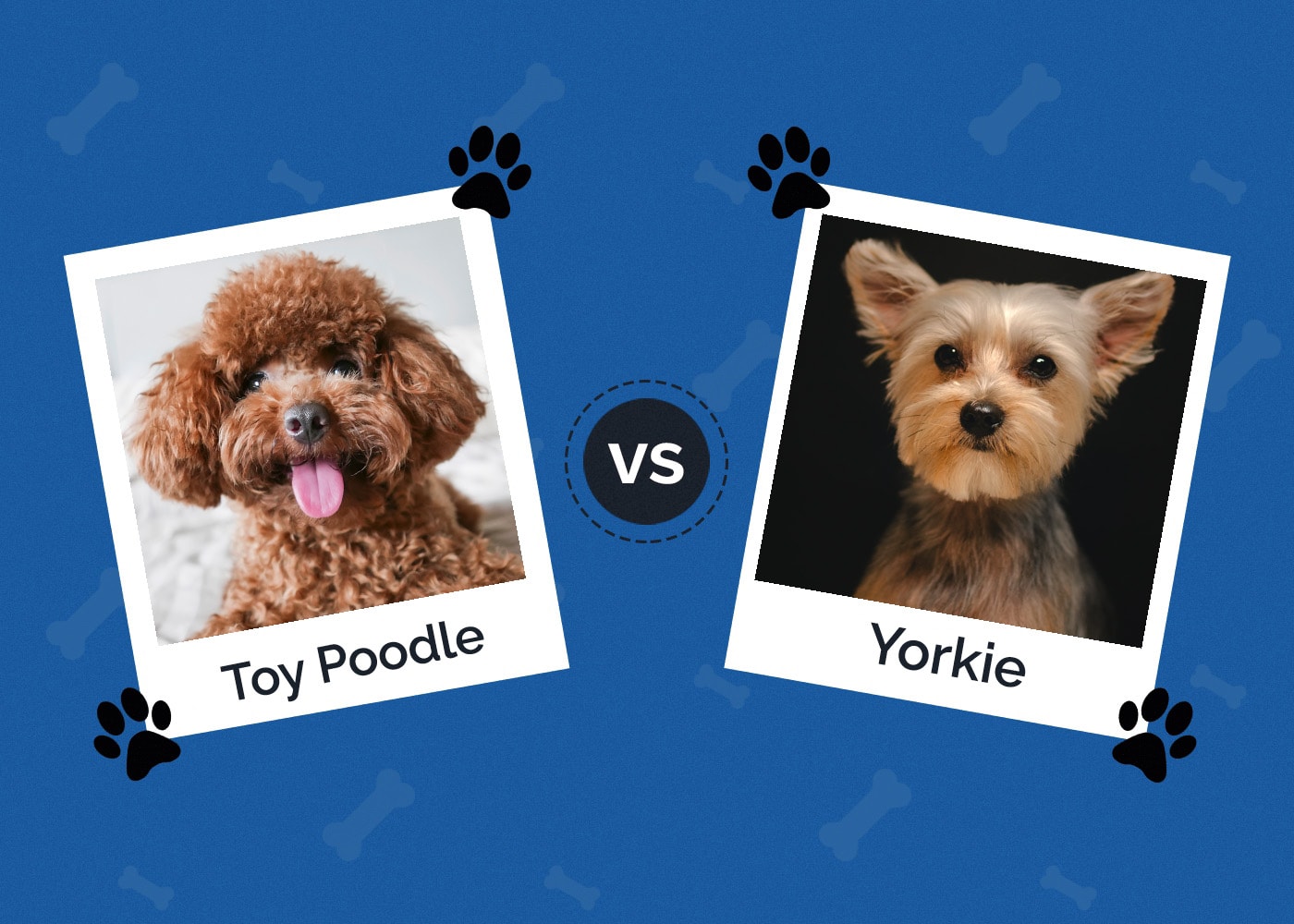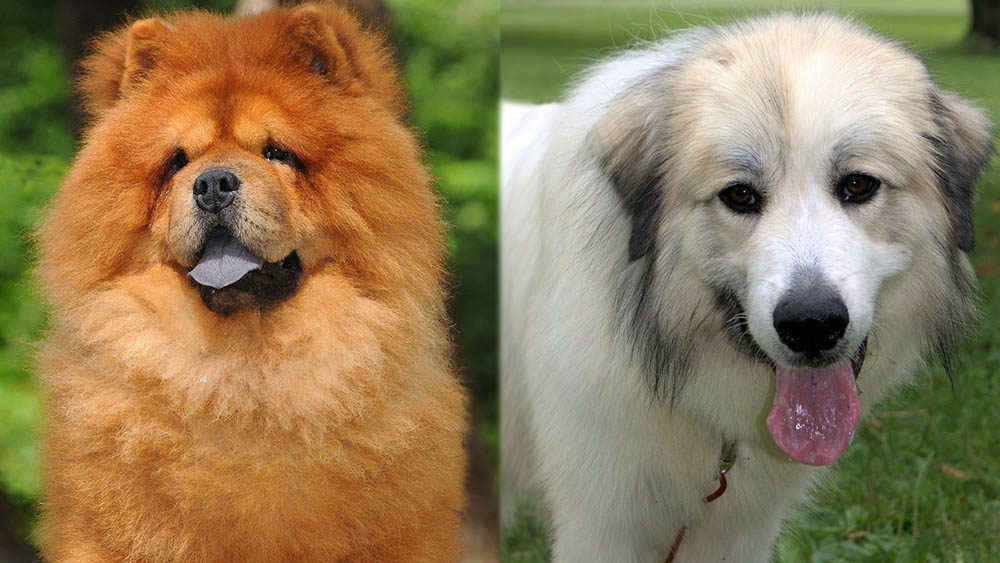6 Types of Pomeranians (With Pictures)

Updated on
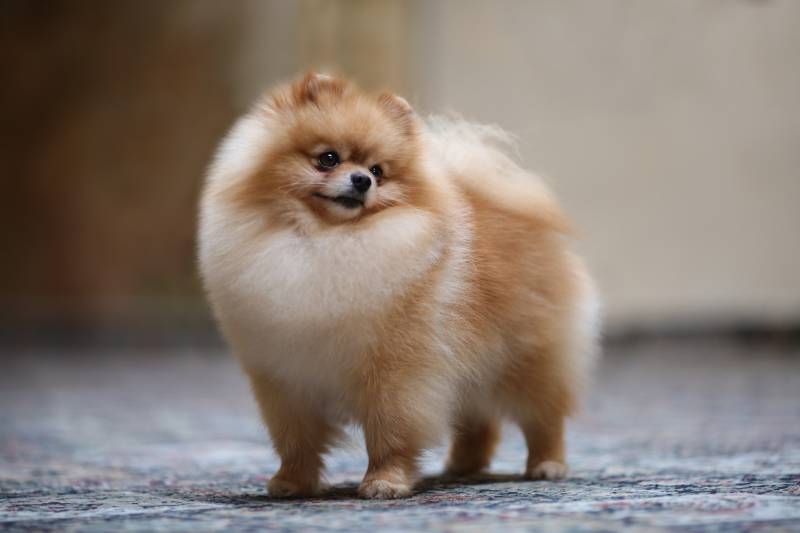
Click to Skip Ahead
Descended from spitz-type breeds in Pomerania, an area that is now part of Poland and Germany, Pomeranians are among the most popular companion breeds today. This toy breed is fluffy, adoring, and adaptable and owes much of their popularity to their cuteness and the efforts of Queen Victoria, who adored the breed during her lifetime.
Due to their popularity and the desire that many dog owners have for adorable dogs, many breeders have developed several types of Pomeranians. Only one is recognized by the AKC, but there are several other appearances and sizes to choose from, all of which share the wonderful personality that Pomeranians are loved for.
How Are Pomeranians Classified?
As a popular toy breed, the Pomeranian is quite common, so many breeders focus on the breed. Their popularity also means there’s a great deal of experimentation with the breed’s appearance, so Pomeranians range from the recognized standard to other unofficial variations. All Pomeranians are excellent and loving companion dogs, though, no matter what their face looks like or how small they are.
There are two ways to classify the Pomeranian and their type: size and facial features. The AKC only recognizes one type of Pomeranian as the standard. They should have a height between 6 and 7 inches and a weight between 3 and 7 pounds. Standard Pomeranians are also considered to have a foxlike face, though some Fox Face Pomeranians can have even longer snouts.
Unofficial types include the smaller Miniature Pomeranian and the larger Throwback Pomeranian. There are also two other face variations. The Baby Doll and the Teddy Bear are both incredibly popular but not recognized by the AKC.
The 6 Types of Pomeranian
1. Standard Pomeranian

| Height: | 6–7 inches |
| Features: | Double coat, large eyes |
| AKC Recognized: | Yes |
Of the available Pomeranian variations, only one is the recognized standard in most kennel clubs across the world. The Standard Pomeranian was recognized by the AKC in 1888 and is the only official type accepted at shows. They’re purebred, range from 3 to 7 pounds, and stand between 6 and 7 inches high.
Standard Pomeranians are described as having a “foxy” expression, with a medium-length snout and pointed ears. Their eyes are larger and wider than those of a fox, and their double coat can be one of several recognized colors: red, orange, cream, tri-colored, black, tan, blue, beaver, and white.
Since the Standard Pomeranian is recognized by the AKC, the variation is generally the healthiest type that you can find. You can still find breeders who aren’t reputable, though, so always do your research first.
2. Fox Face Pomeranian
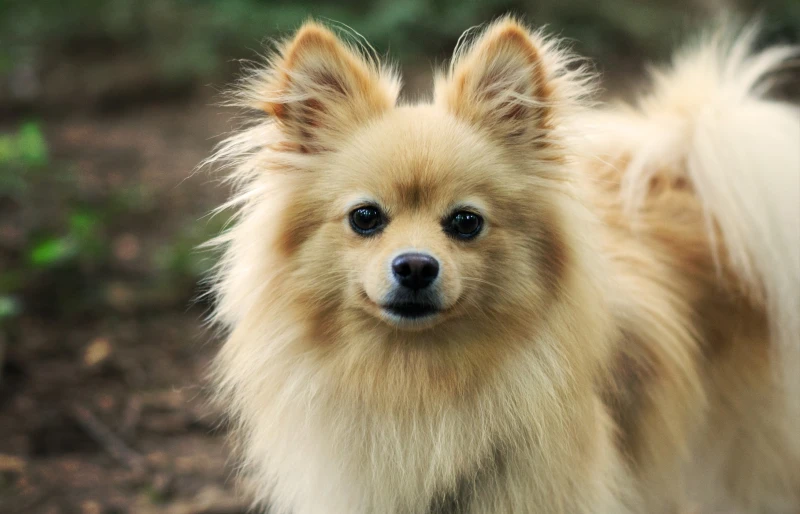
| Height: | 6–7 inches |
| Features: | Long snout and pointed ears |
| AKC Recognized: | Yes, if they meet the standard |
To meet the AKC standard, your Pomeranian will need to have a foxlike face. For this reason, the Fox Face Pomeranian is often the only recognized face variation for the breed. However, some Fox Face Pomeranians can have longer snouts than the standard calls for. They can also fall under the Miniature or Throwback varieties, which aren’t recognized.
Fox Face Pomeranians don’t look exactly like a fox, of course. They can also be colors other than the red, orange, or white hues recognized in foxes and have larger, rounder eyes.
Due to their long snout, they generally have fewer breathing issues than the Baby Doll or Teddy Bear breeds, but they can still suffer from many of the common health issues that affect Pomeranians, such as allergies, eye disorders, epilepsy, collapsed trachea, and Legg-Perthes disease.
3. Miniature Pomeranian
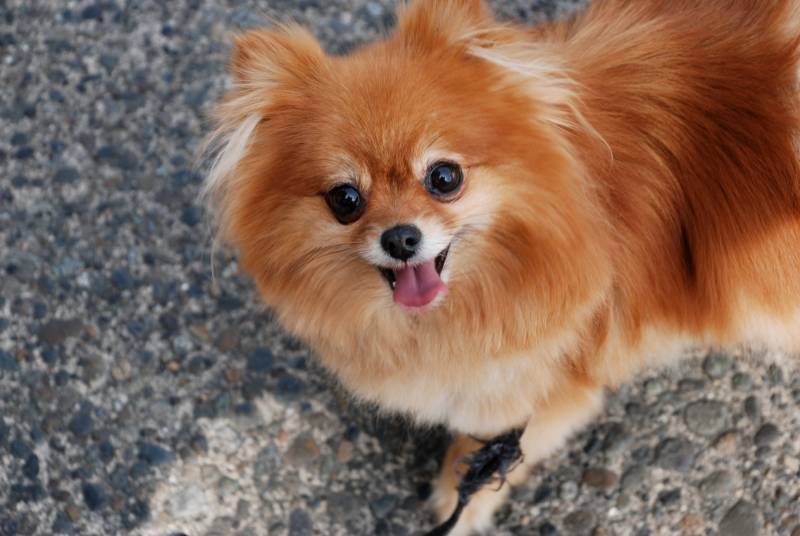
| Height: | Less than 6 inches |
| Features: | Small |
| AKC Recognized: | No |
The first of the unofficial types of Pomeranian is the Miniature. This one is incredibly popular but also controversial due to the breeding methods that many breeders use to develop these small dogs.
While you can find reputable breeders specializing in the Miniature Pomeranian, you have to be prepared for their greater risk of health issues. They often have a short lifespan and are subject to shady breeding practices, as breeders try to meet the increasing demand for pocket-sized puppies.
These dogs are also known as Micro, Pocket, Teacup, and Toy Pomeranians. They’re always smaller than the Standard Pomeranian and stand less than 6 inches tall and only weigh between 3 and 4 pounds.
4. Teddy Bear Pomeranian
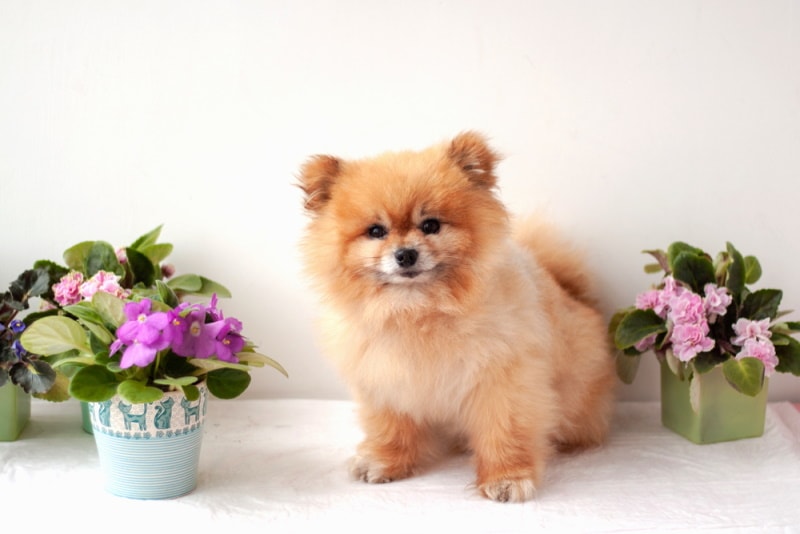
| Height: | 6–7 inches |
| Features: | Brachycephalic snout, round face, large eyes |
| AKC Recognized: | No |
There’s a growing fondness for dogs with squashed noses and eyes set close to the muzzle. Pomeranians have been bred to meet this appearance, and the Teddy Bear Pomeranian has the shortest snout of all the Pomeranian types. They also have much softer and rounder features than the Standard’s pointier appearance.
Unfortunately, the Teddy Bear Pomeranian isn’t recognized by the AKC, and you have to be careful about potential health issues. Their brachycephalic snouts also mean they have a much greater likelihood of developing breathing issues and eye problems.
5. Baby Doll Pomeranian
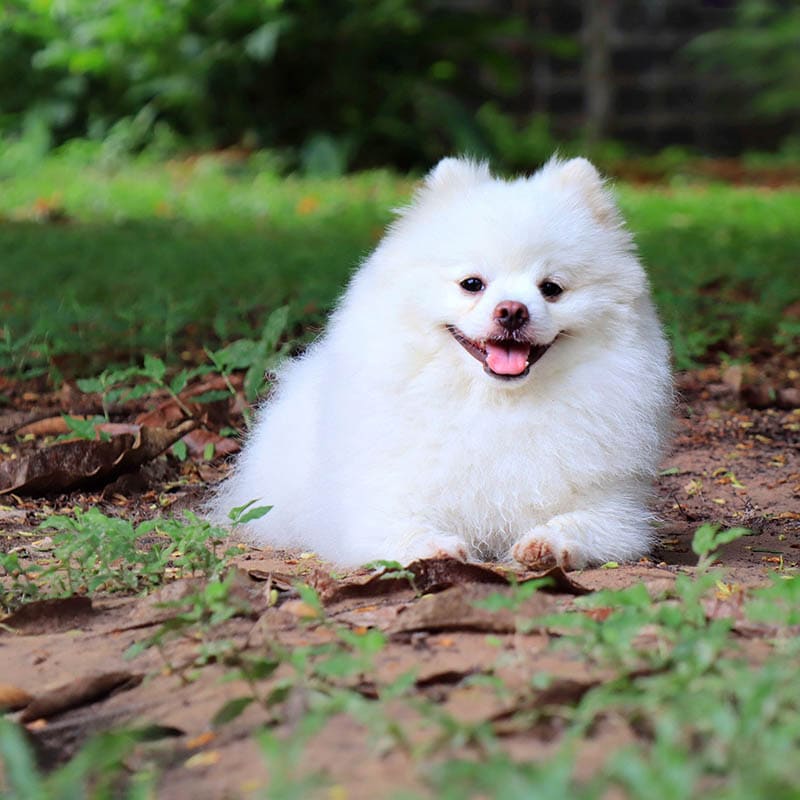
| Height: | 6–7 inches |
| Features: | Round face, large eyes, short snout but longer than the Teddy Bear’s |
| AKC Recognized: | No |
Midway between the Teddy Bear Pomeranian and the Fox Face Pomeranian is the Baby Doll Pomeranian. This type has soft, round features like the Teddy Bear, but their nose is slightly longer. Although they’re not quite as brachycephalic as the Teddy Bear Pomeranian, Baby Doll Pomeranians can still suffer from many health issues related to their breathing.
Despite these problems, the Baby Doll Pomeranian is adored for their soft “baby doll” look and wide, expressive eyes. They’re not recognized by the AKC, but they’re just as loving and intelligent as the Standard Pomeranian.
6. Throwback Pomeranian
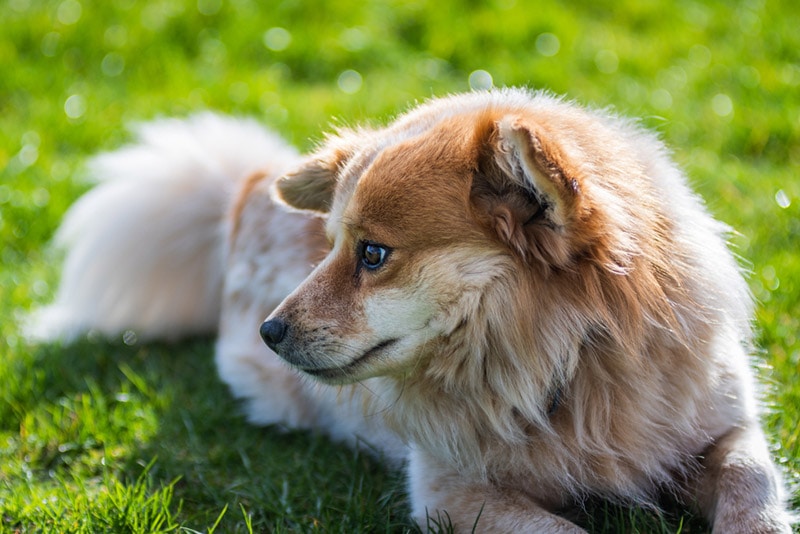
| Height: | 12–20 inches |
| Features: | Often a crossbreed, larger than most Pomeranians |
| AKC Recognized: | No |
The type of Pomeranian that’s the closest to the breed’s ancestors is the Throwback Pomeranian. Unlike the smaller Standard Pomeranian, the Throwback is similar to Spitz-type dogs and is wolf-like in appearance. They tend to have long snouts and pointy heads, though despite being bigger than the other Pomeranian types, they are still small dogs.
Since they’re larger than other Pomeranians, they’re not considered to be that cute, despite their fluffy coat and their similar temperament. They’re not recognized by the AKC and won’t be able to take part in shows.
The Throwback Pomeranian is also likely to be more expensive than the Standard Pomeranian but has a larger breed pool that they’re descended from.
How to Find Reputable Pomeranian Breeders
With the number of health issues that Pomeranians can develop, especially due to bad breeding practices, you must find a breeder whom you can trust. While you might be excited about getting your first Pomeranian, don’t be tempted to latch onto the first breeder you find. Always do your research, and ensure that they want what’s best for the dogs and you.
Knowledge and Honesty
A breeder worth their weight in gold will always be happy to answer any questions that you might have. They need to be knowledgeable about the dogs that they breed and be honest when they speak with you.
Besides doing your own research about Pomeranians, always ask the breeder about potential health issues to watch out for. You can also ask how long the breeder has been in business and what makes them love Pomeranians so much.
They might even give you awesome tips about looking after your puppy, including food recommendations, training methods, and grooming tips.
The Health of the Dogs
How healthy the dogs are determines how trustworthy the breeder is. Always ask if you can meet the mother of the litter and how many litters she has a year. Once a year is ideal, but some breeders will breed them twice or three times. Dogs having too many litters a year or the breeder selling puppies from more than one litter at once, even if they’re different breeds, could be a sign of a puppy mill.
A reputable breeder will be willing to share the health records of the puppies and the parents, including any genetic issues in their history. Don’t forget to ask about the father too. While many breeders use stud dogs rather than keep a male dog for breeding purposes, they should be knowledgeable about them too.
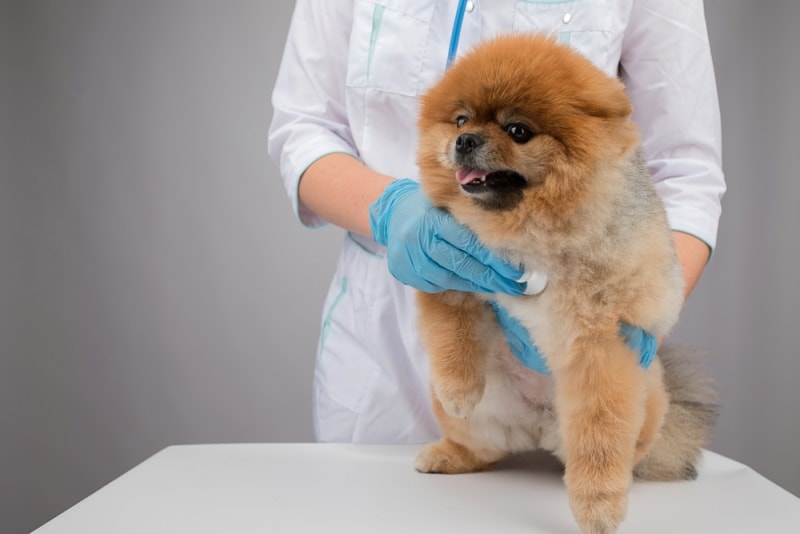
Willingness to Ask Questions
Part of your responsibility as a prospective dog owner is to ask plenty of questions. The more questions you ask, the more information you can learn from the breeder about their dogs, breeding knowledge, and business practices. You’re not the only one who should be asking questions, though.
A reputable breeder will always make sure the puppies that they’re selling are destined for loving forever homes. To do this, they should also ask you questions to determine how suitable you are as an owner.
Making sure the puppy you buy will be safe means asking questions about your home life and your experience as a dog owner. They’ll also make sure you’ve done your research about training and taking care of your new puppy, especially if you’re new to dogs. While they might want to make a sale, a breeder who truly cares about their dogs won’t let them go to just anyone.
Price
Price is always something to consider. Pomeranians aren’t cheap dogs, and whether they’re a recognized standard or an unofficial type can also make a difference to the price. Be wary if the price is suspiciously low or far higher than average.
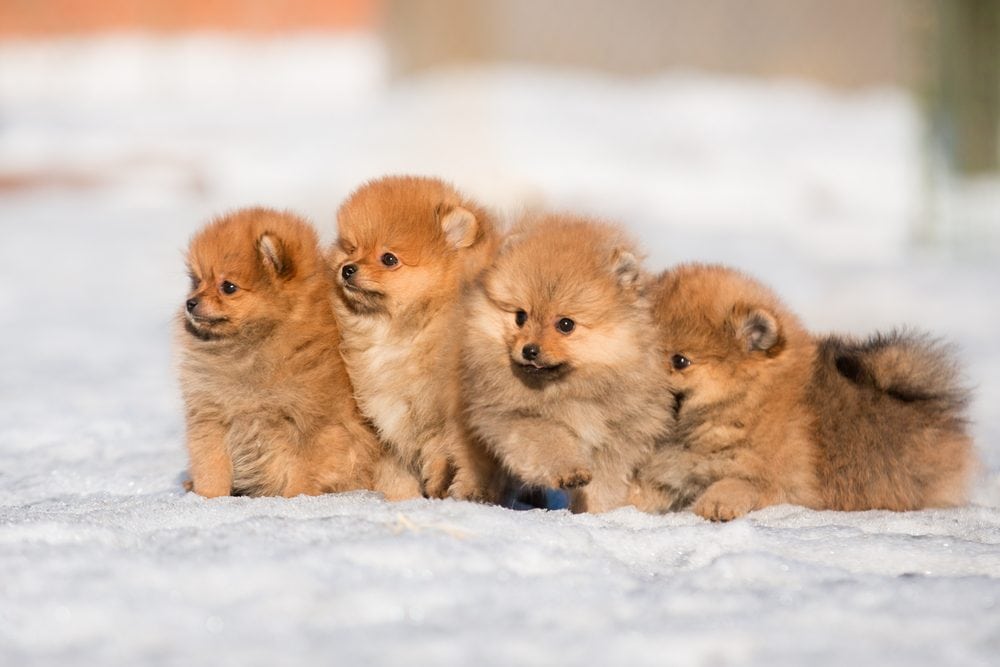
Return Policy
Many breeders will keep in contact with the owners of the puppies that they breed. They’ll love to hear how your dog is doing and want to keep track of how well they grow and any health issues that might arise.
Many reputable breeders will have a return policy just in case you find that you can’t afford to keep your Pomeranian. Instead of letting you take the dog to a shelter, the breeder should be willing to take the dog back so they can find them another home.
Conclusion
Although there’s only one Pomeranian type that can be a show dog, the breed’s popularity means there’s a great deal of variation in their appearance. Beyond the standard, fox-faced, show dogs recognized by the AKC, the types of Pomeranian include Teddy Bears, Baby Dolls, Miniatures, and Throwbacks.
If you decide to get a Pomeranian, make sure the breeder you choose is reputable. You need to check the health histories of the dogs and ensure that the breeder uses moral and safe breeding practices for each litter.
See Also:
- Pomchi (Pomeranian & Chihuahua Mix)
- Pomapoo (Pomeranian & Toy Poodle Mix)
- Pomsky (Pomeranian & Husky Mix): Breed Info, Pics, Puppies, Traits, and Facts
Featured Image Credit: SubertT, Shutterstock


